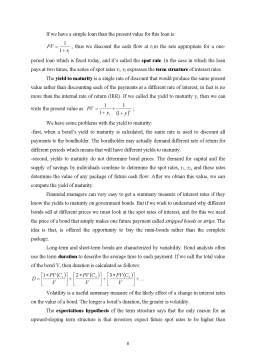Extras din proiect
In this chapter are proposed the concept of present value to price common stocks which help us to understand why some investments are priced higher than other and to understand how shares are valued and what determines the shares’ value.
The chapter start with a brief look at how shares are traded. We know that if a firm wish to raise additional capital has some opportunities like borrowing or selling new shares to investors which occur in the primary market. When investors are operating on secondary market which means to buy one from each other, they do not raise new capital for the firm because they are operating with the existent shares.
Usually, when we want to buy some shares, we contact a specialist who has the responsibility to trade in each stock, and keeps a record of orders to buy and sell. He can help us because he will check this record to see if someone want to sell at our price, or eventually he can find a better deal for us from one of the other brokers. Also, if someone doesn’t want to sell at our price he can wait until an available offer is made, and then he can execute the order as soon as possible.
For example in United States, New York Stock Exchange is one of the principal secondary marketplace, but is not the only stock market in United States because many shares are traded over the counter by a network of dealers who display the prices at which they are prepared to trade on a system of computers terminals. If someone agrees a price, he can call the dealer and strike a bargain.
We know that the discounted-cash-flow formula for the present value of a stock is just the same as it is for the present value of any other asset. Shareholders receive cash from the company in the form of a stream of dividends. So, present value of stock is equal with the present value of expected future dividends. When investors buy stocks, they usually expect to receive a dividend, but also they hope to make a capital gain.
The rate of return which investors expect to receive from this shares after one year called market capitalization rate is the expected dividend per share DIV1 plus the expected price appreciation per share P1-P0, all divided by the price at the start of the year P0:
Common stocks do not have a fixed maturity; their cash payments consist of an indefinite stream of dividends. Therefore, the present value of a common stock is:
If forecasts of dividend and price are given to investors and the expected return offered by other equally risky stocks, we can predict that the today’s price is:
The principal idea is that at each point in time all securities are an equivalent risk class are priced to offer the same expected return. This is a condition for equilibrium in well-functioning capital markets. It is also a common sense.
Futures stock prices are not easy things to forecast directly. The investors expect its stock price to rise by the end of the first year because they expect higher dividends and more capital gains in the second year. But, if we have a final period H, we can express P0 in terms of DIV1, DIV2, DIVH, and PH and obtain:
H could be infinitely distant, because common stocks do not expire of old age, but as H approaches infinity the present value of the terminal price ought to approach zero. If we forget about the terminal price entirely and express today’s price as the present value of a perpetual stream of cash dividends we can write P0=
We must be careful to not say that the value of a share is equal to the sum of the discounted stream of earnings per share because earnings are generally larger than dividends because part of those earnings is reinvested in new plant, equipment, and working capital.
If we suppose that we forecast a constant growth rate for a company’s dividends which is another example of the growing perpetuity. To find its present value we must divide the annual cash payment by the difference between the discount rate and the growth rate:
These two formulas are much easier to work with, and we will use a practical example. The prices charged by local electric and gas utility are regulated by the state commissions which try to keep prices down and in the same time allow the utilities to earn a fair rate of return which ought to be the rate offered by securities that have the same risk as the utility’s common stock. They call r the cost of equity capital and both utilities and regulators devote considerable resources to estimating r.
Preview document
Conținut arhivă zip
- The Value of Common Stocks - Valuing Debt.doc














